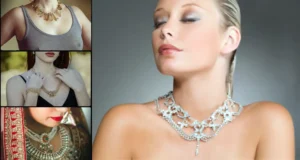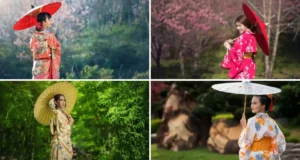In many indigenous cultures, it is customary for girls and women to go without wearing bras. There are several reasons for this practice rooted in the traditions, environments, and beliefs of different tribes.
Some tribes consider exposed breasts as a symbol of beauty, motherhood, and femininity rather than sexual objects. Therefore, covering the breasts with bras is viewed as unnecessary.
The climate that many tribal people live in also favors not wearing bras. Traditional loose clothing allows for better airflow and evaporation to keep tribal women cool.
The physical activities commonly performed by tribal girls may not require the same level of breast support as provided by bras. Tribal girls engage in simple daily chores and tasks within their villages that involve minimal body movement.
Overall, converging cultural, environmental, and practical factors contribute to girls’ lack of bra usage in tribal communities. While bras provide benefits like support and shaping, tribal dress focuses more on comfort, tradition, and suitability to lifestyles and tasks that have been practiced for generations.
I will elaborate on reasons why tribal girls don’t wear bras and the traditional clothing items that provide some breast support in tribal communities.
Why tribal girls don’t wear bras?
Because of Cultural Norms
In many tribal cultures, breasts are seen as symbols of fertility and not as sexual objects. There is no social expectation for tribal girls to cover their breasts. They value natural body acceptance and freedom from tight clothes.
Wearing bras is considered restrictive dressing. The emphasis is on comfort and practicality in tribal clothing for girls. Traditional tribal clothes for females usually consist of wrap-around cloth for the lower body and plain tops for the upper body. Breasts remain exposed, which is seen as normal in their community.
Tribal girls grow up seeing mothers and sisters dress the same, so they also don’t feel the need to cover up. The bra-less dressing is part of their traditional cultural practice passed through generations. That is why most tribal girls don’t wear bras as part of their usual attire.
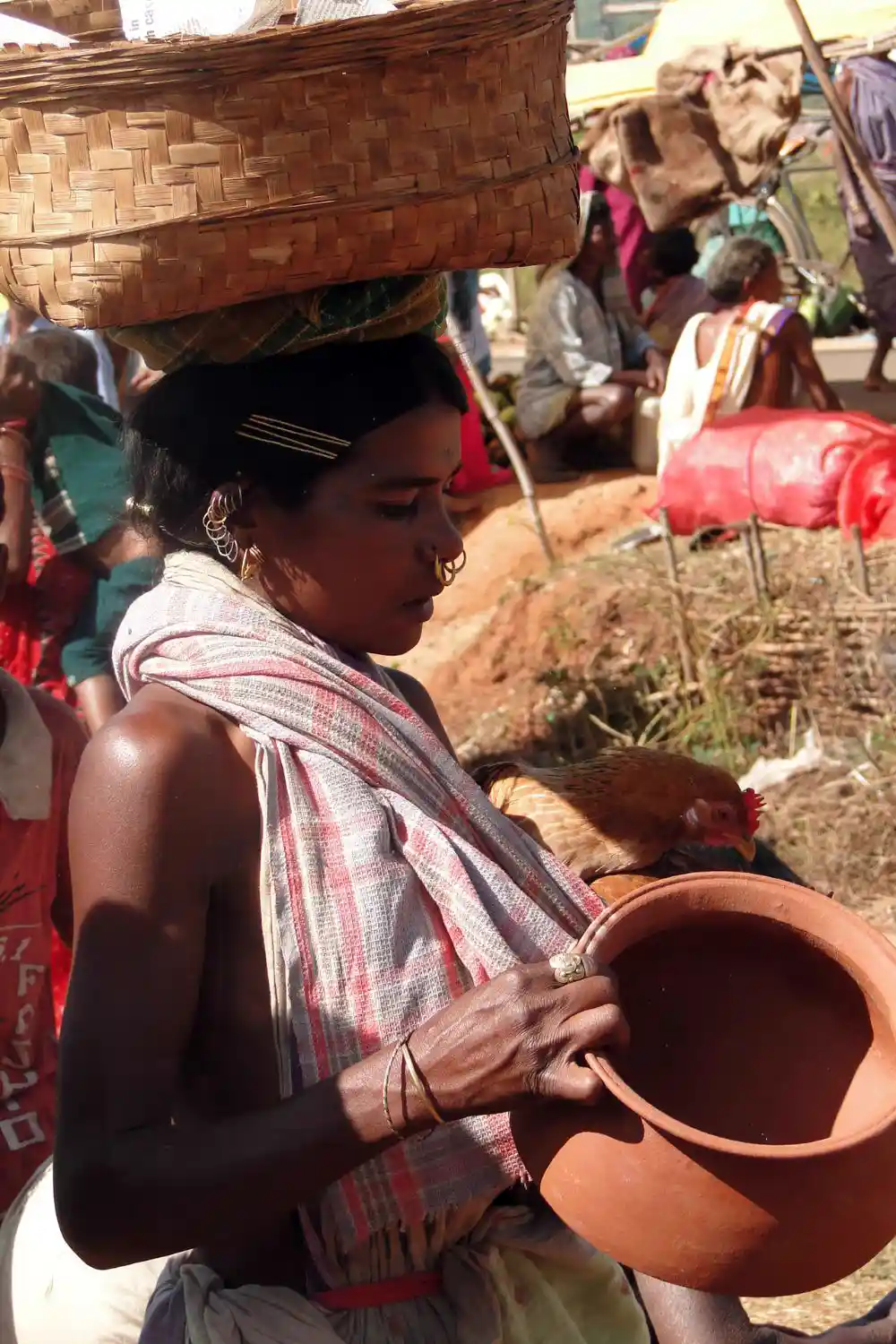
For Personal Comfort
Tribal girls tend to find bras uncomfortable clothing. The underwire and tight straps of bras often cause irritation and pain for tribal girls who are used to losing clothing.
Tribal girls usually prefer loose traditional clothes that let them move around freely without restrictions. Wearing bras means adding extra tightness and discomfort that they want to avoid. Not wearing a bra allows tribal girls to feel more at ease as their traditional clothing is already designed for comfort instead of support.
Going without a bra is a personal choice of tribal girls based on what makes them comfortable. For generations, tribal girls have grown up observing mothers and sisters wearing loose clothes without bras.
So not wearing bras has become an ordinary part of their everyday attire due to what tribal girls have become acclimatized to since childhood. That is why comfort is the main reason why they typically prefer not wearing bras.
Because of the High Cost
Bras can be expensive undergarments for tribal girls to buy. In remote rural areas, there is limited access to affordable bras, especially ones that fit tribal women well.
Traditional tribal attire also does not usually require bras to wear. Tribal girls mainly rely on clothing made within their community using locally available materials.
As bras are not a necessary part of this traditional clothing, tribal girls do not usually see a need to spend on them. The relatively high cost of bras compared to the simple clothes tribal girls wear contributes to their decision not to buy them.
For generations, tribal girls have observed mothers and sisters wearing loose cloth freely without bras. So not spending money on bras has become an ordinary practice within the community due to financial constraints.
Thus, the relatively high cost of bras compared to the simple traditional attire tribal girls wear is an important reason why they generally do not own or wear bras.
Considering Health Concerns
Some people believe that wearing bras, especially underwire bras, can negatively impact a woman’s health. They claim that tight bras may obstruct the lymphatic system and increase the risk of breast cancer. However, no scientific research proves these claims. Yet, some tribal girls think that not wearing bras is healthier.
Tribal girls raised seeing mothers and sisters wearing simple, loose clothing without bras normalize bra-less dressing. They learn that flat-chested tribal women have avoided wearing uncomfortable underwire bras for generations without suffering health issues.
So not wearing bras becomes a cultural practice passed through generations within the tribe. While modern science has not found health risks associated with wearing bras, some tribal girls choose to go without due to concerns perpetuated within their cultural beliefs.
Because of the Size of the Breasts
Many tribal girls have relatively smaller breast sizes. Women with smaller breasts may not require as much support from bras as those with larger breasts.
Tribal girls with flat chests can go without bras as they do not experience much discomfort or need extra support. Wearing restrictive bras tends to cause more discomfort for girls with smaller breasts. Tribal girls instead prefer wearing loose traditional clothes that let them move freely.
Tribal girls observe mothers and sisters with small breasts going without bras for generations. So non-use of bras has become customary for girls with small breast sizes. They grow up seeing bras as unnecessary for smaller breasts.
This helps normalize bra-less dressing within the tribe, even for girls with smaller busts. Thus, having comparatively miniature breast sizes makes it feasible for most tribal girls to comfortably forgo wearing bras due to experiencing fewer issues without them.
According to Their Activities
Tribal girls tend to engage in less rigorous physical activities that do not require breast support from bras. They usually perform simple tasks around their village, like fetching water and helping with domestic chores.
These activities involve minimal movement that causes little breast motion. So bras are not necessary for tribal girls to prevent discomfort. Not wearing bras has become an ordinary practice within their community for generations. Tribal girls are used to wearing loose clothes that are comfortable for their routine sedentary lifestyle.
Bras are considered unnecessary for the type of activities tribal girls generally participate in. Since tribal girls engage in activities that do not require breast support, they can easily forgo wearing bras.
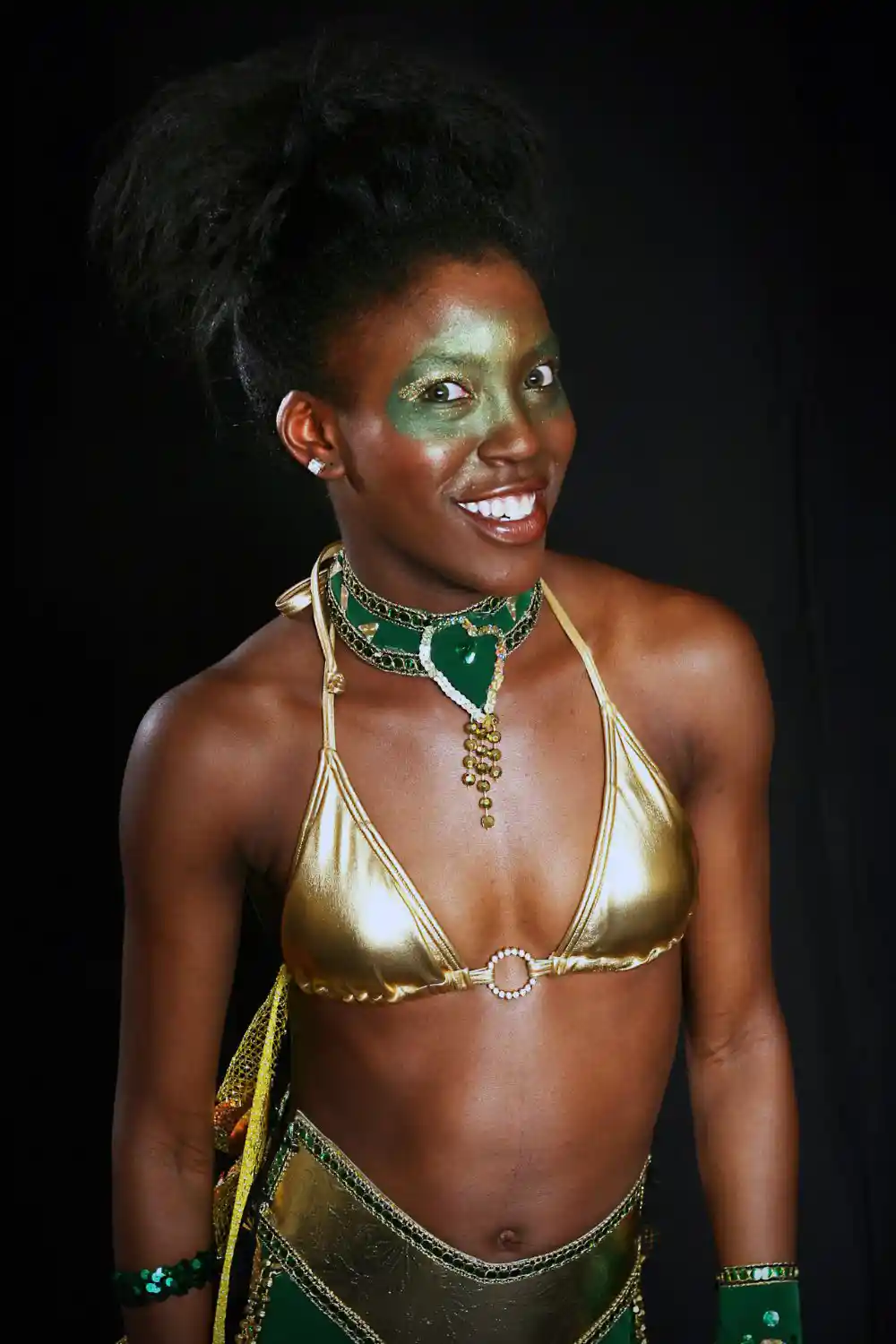
Due to Climate
Tribal girls living in hot climate zones find going without bras to be more comfortable. Wearing a bra in high temperatures can cause increased sweating and discomfort for girls. Bras trap heat against the skin while limiting air circulation that could cool down.
Not wearing a bra allows for better airflow and evaporation, making tribal girls more comfortable in the heat. Bra-less dressing becomes normalized within their community as the most sensible option.
For generations, tribal girls have adapted to living without the discomfort that bras bring in their arid environment. Thus, the hot climate that tribal girls reside in encourages them to avoid wearing bras to minimize heat and sweat and optimize comfort through better ventilation.
What are the traditional clothing items for breast support in tribal communities?
Many tribal communities have their own traditional forms of clothing that offer some level of breast coverage and support for women.
However, the degree of breast support varies and often differs from that of modern bras. Traditional clothing emerged from the practical needs and cultural aesthetics of each tribe.
Wrap-around dresses
Wrap-around dresses worn by tribes like the Navajo and Hopi cover the torso and offer modest breast coverage. These dresses consist of one large piece of fabric that women wrap and tie around their bodies. Though not form-fitting like bras, these dresses prevent complete exposure of the breasts.
Carnival costumes and robes
The Chakma tribe in Bangladesh wears colorful carnival costumes and robes for festivals. These outfits cover the upper body and offer loose breast support through their design. While not compressing the breasts tightly, the decorative robes prevent excessive breast movement during dancing and celebrations.
Breechcloths
Both men and women in tribes like the Omaha wear breechcloths with a long strip of animal skin or cloth tied around the waist. Though minimal, breechcloths offer some breast coverage by hanging over the torso. Breechcloths originated from practical needs rather than a focus on breast support.
Animal pelts
Some Native American tribes wear animal pelts and skins that cover much of the body, including the breasts. These garments are made from readily available animal hides and offer basic breast coverage while allowing movement flexibility. The focus was on protection and warmth rather than specialized breast support.
While traditional clothing items vary widely, they generally provide looser, less defined breast support than modern bras. Due to cultural norms, tribal communities often emphasize shaping or lifting breasts less. Traditional outfits cover the breasts in simple, understated ways that blend function with local aesthetics.
The decision to wear either traditional clothing providing some breast coverage or modern bras with specialized support remains a personal choice. Tribal communities value body acceptance and comfort over conforming to outsider beauty standards. Traditional multi-purpose garments reflect priorities of cultural continuity, practicality, and self-sufficiency.
In summary, various types of traditional clothing like wrap dresses, robes, breechcloths, and animal pelts offer tribal women some degree of breast coverage through their designs.
However, the breast support tends to be looser, more minimal, and less defined than provided by bras. Traditional outfits reflect the cultural needs and values of each tribe rather than a focus on enhancing or altering breast shape for aesthetic purposes. The level of breast support suits the lifestyles and activities of different tribal communities.
What are the different tribal cultures not wearing bras?
Many tribal cultures exist where women traditionally do not wear bras. Different reasons shape this practice within each tribe based on their customs, environment, and beliefs. Below are some examples of tribal cultures where women go without bras:
The Maasai people of Kenya and Tanzania
The Maasai people of Kenya and Tanzania do not traditionally wear bras. For Maasai women, breasts symbolize beauty and fertility. Their semi-nomadic lifestyle in East Africa’s savannahs makes bras impractical.
The warm climate also makes bras uncomfortable. Maasai dress code focuses on functionality, comfort, and cultural identity over conformity to modern fashion.
The Himba people of Namibia
The Himba people of Namibia also do not wear bras. For Himba women, exposed breasts demonstrate femininity and womanhood. Their traditional dress of ochre-coated skin and few adornments prioritizes simplicity.
The arid Namib Desert climate makes bras unpleasant to wear. Going without bras suits the Himba’s pastoral lifestyle of tending livestock.
The Sentinelese people of India
The Sentinelese people on North Sentinel Island in India constitute one of the world’s most isolated tribes. They have minimal contact with the outside world. Therefore, Sentinelese women do not wear bras because they have no exposure to them.
Their tradition of modest dress and respect for privacy. Exposed breasts symbolize innocence and purity within their culture.
The Yanomami people of Venezuela and Brazil
The Yanomami people, an indigenous group in the Amazon rainforest spanning Brazil and Venezuela, traditionally do not incorporate bras into women’s clothing. For the Yanomami, breasts symbolize beauty and motherhood. Their semi-nakedness also shows pride in natural body shapes.
The hot, humid rainforest climate makes bras too warm. The Yanomami value cultural continuity, prioritizing traditions that suit their forager-horticulturalists lifestyle.
The Kayan people of Myanmar
The Kayan people of Myanmar also do not wear bras traditionally. For Kayan women, exposed breasts exemplify femininity and attractiveness. Their cultural practice of neck-lengthening coil rings requires loose-fitting clothes for comfort. The upper body remains exposed.
The climate in the areas Kayan resides suits being bra-less. Kayan fashion focuses on the aesthetics of elongated necks over mainstream ideals of breast support.
Several factors contribute to why tribal cultures may not traditionally wear bras. Reasons include climate, practical needs based on lifestyle, the symbolic meaning of exposed breasts within their culture, and traditions passed down for generations.
While bras offer support, coverage, and shaping, tribal dress prioritizes comfort, identity, and customs aligned with their environment. The practice also reflects a cultural valuation of natural beauty over conformity to modern ideals about breast presentation.
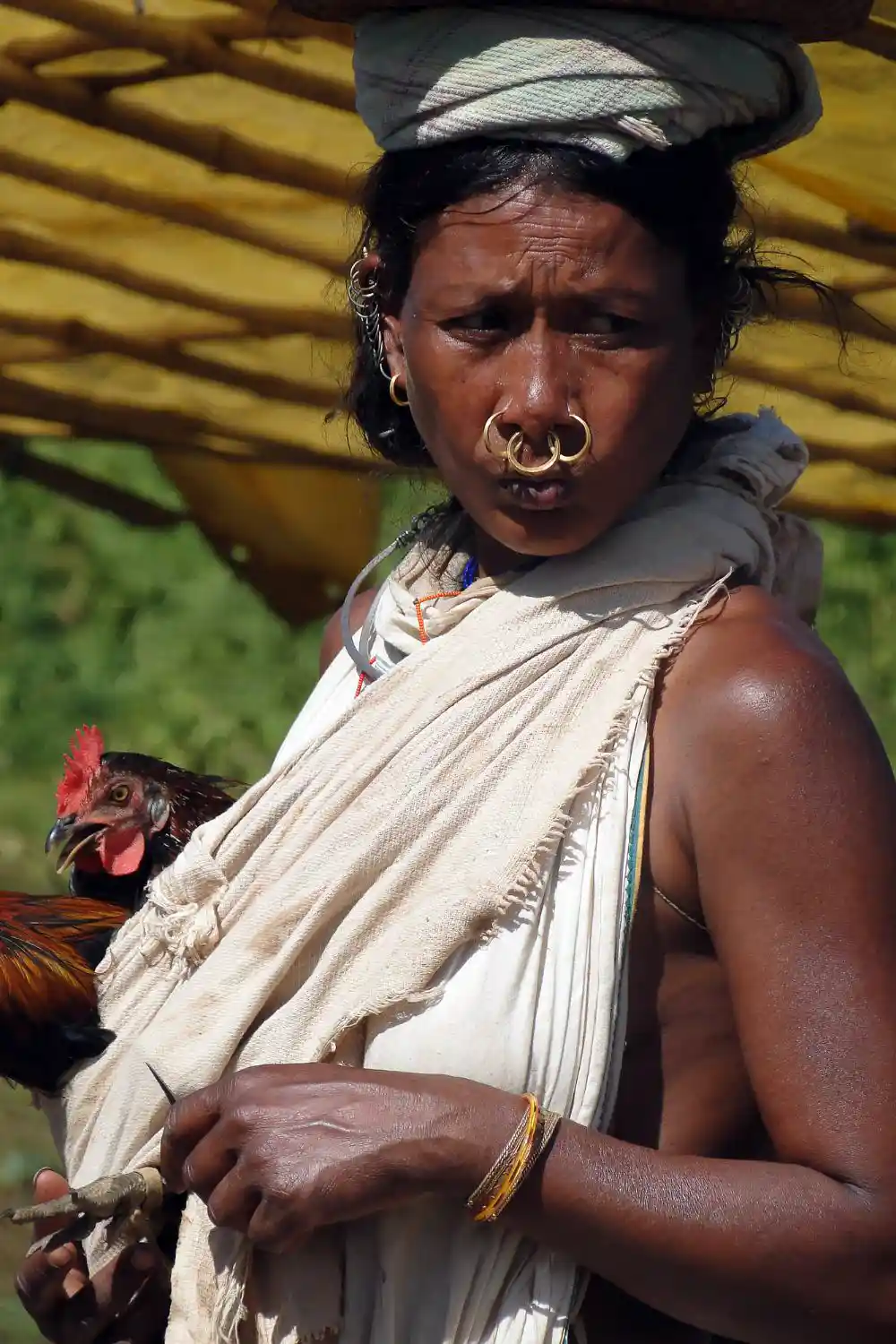
Summary
In many tribal cultures, girls and women do not wear bras due to a combination of cultural norms, comfort, cost, health concerns, breast size, activity level, and climate.
Tribal communities often view breasts as symbols of beauty and femininity rather than sexual objects, leading to the acceptance of exposed breasts and the avoidance of bras. The loose traditional clothing worn by tribal girls provides comfort and practicality, making bras unnecessary.
The high cost of bras, limited access to them in remote areas, and the lack of requirements in traditional attire contribute to the decision not to wear them. Some tribal girls believe that not wearing bras is healthier, despite the lack of scientific evidence supporting this claim.
Smaller breast sizes among tribal girls also make bras less necessary for support and more uncomfortable to wear. The activities performed by tribal girls typically do not require breast support, further diminishing the need for bras.
Additionally, the hot climate in tribal regions favors not wearing bras, as it allows for better airflow and evaporation. Traditional clothing in tribal communities provides some breast coverage and support but differs from modern bras in design and level of support. These clothing items are rooted in cultural aesthetics and practicality, reflecting the values of each tribe.
Tribal communities prioritize comfort, tradition, and suitability to their lifestyles regarding clothing choices and breast support.
FAQ
Which country has the smallest bra size?
According to a study published in The Journal of Female Health Services, Filipino women have the smallest breasts in the world.
Does going braless cause sagging?
There is no scientific evidence to support this claim. Sagging breasts, or breast ptosis, is mostly due to the normal aging process, genetics, and weight changes rather than the lack of support from a bra.
Do French girls not wear bras?
French girls have embraced the trend of going braless in recent years. They are abandoning their bras in record numbers, with 13% of French women under 25 going braless. The trend is particularly pronounced in younger women, with one in six women under 25 telling pollsters that they never wear a bra.
Who invented bras?
In 1913, Mary Phelps Jacob, also known as Caresse Crosby, invented the modern bra made from handkerchiefs and ribbons during a true fashion emergency. She received a patent for the garment she called a “brassiere” on November 3, 1914. Her invention was lightweight, soft, comfortable, and naturally separated the breasts.
